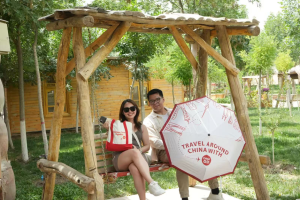02 Jul 2025
In early June, the 2025 Graduation Exhibition of the Academy of Film and Creative Technology at Xi'an Jiaotong-Liverpool University took place as planned.
The works showcased by students from the five programmes reflect a remarkable level of creativity and forward-thinking. From the selection of themes to the integration of cutting-edge technology and media, these projects demonstrate a deep understanding of how to engage with contemporary issues through an individual lens. The students address social concerns through their unique perspectives, convey humanistic values via emerging media, and explore the dynamic interplay between art, technology, and emotion in their hybrid creations that blur the lines between the virtual and the real.
This article zooms in on the interview scene, capturing the authentic voices of several recent graduates. They discuss the origins of their inspiration, the anxieties they faced, and the challenges they overcame. They share intricate details of their creative journeys and openly reveal the emotional highs and lows along the way. These conversations represent a generation of young people responding to questions of identity, society, culture, and the future.
Cultural Hamburger Shop
Yumeng Wang, MSc Cultural and Creative Industries
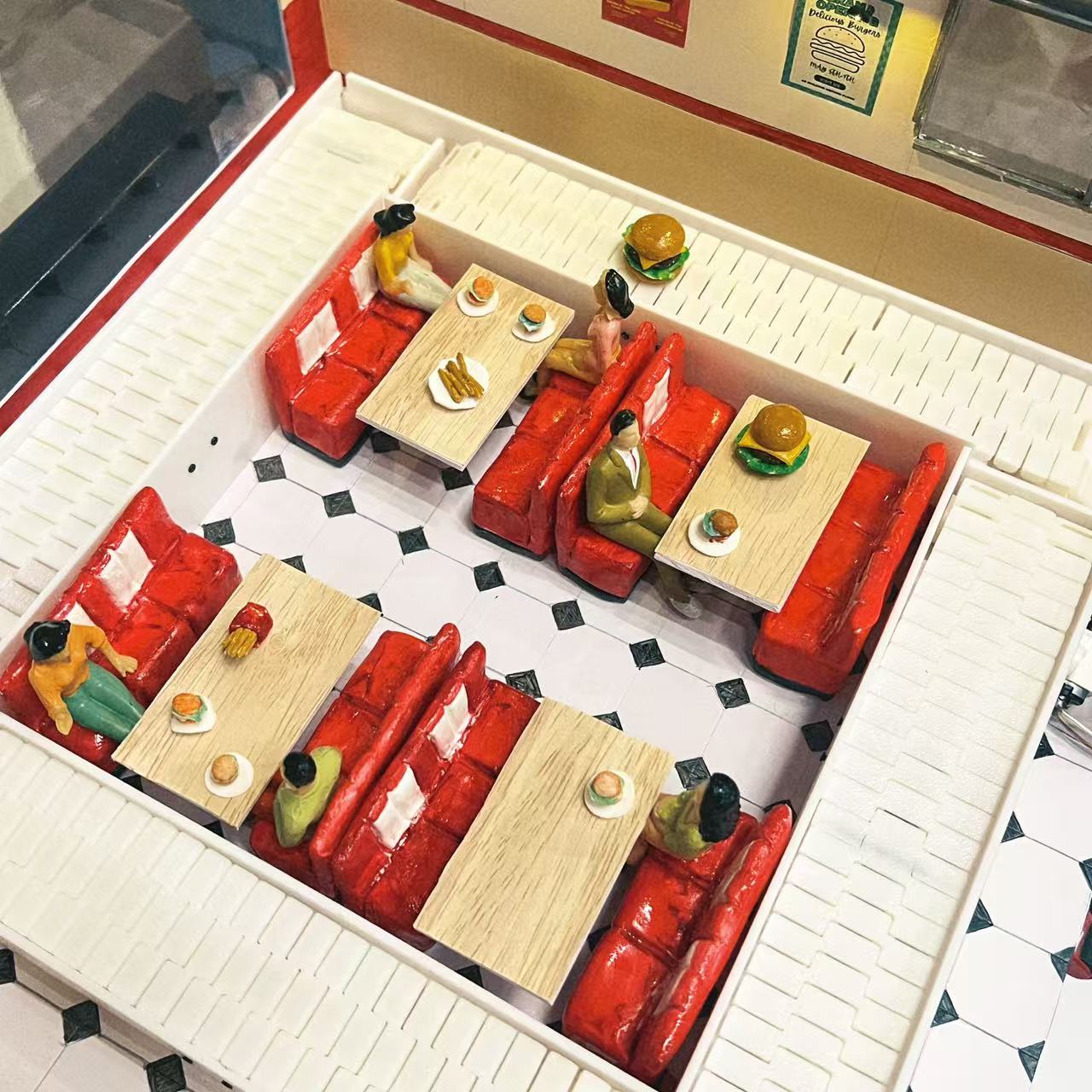
Q1. Please briefly describe your final work and what theme or emotion it hopes to convey.
My graduation work is called "Cultural Burger Shop". Using the "production process of fast food" as a metaphor, it explores the phenomenon of accelerated cultural production, fragmented dissemination, and superficial consumption in the context of "social acceleration" today. In the work, different traditional cultural elements are compared to ingredients for making hamburgers. The processes of refrigeration, cutting, frying, and assembly simulate the transformation of culture from its original state to a fast-moving consumer product. Through this work, we hope to prompt viewers to reflect: when culture becomes fast food, what exactly are we consuming?
Q2. What do you think are the innovative parts of your work?
I believe the work is most innovative in two aspects. The first is conceptually: we use the structure of a food production line to metaphorise the mechanism of cultural dissemination in today's social context. Through the relaxed and concrete form of a "burger shop", we make the originally complex and somewhat heavy cultural issues visible, tangible, and accessible. The second is in the presentation form: we have also made rich attempts, combining media such as installations, illustrations, and videos. Using this multi-dimensional approach, we enhance the exhibition's appeal and immersive experience. Through the integration of media, we hope that viewers are not just "spectators" but can become "consumers" walking into this cultural burger shop, understanding and reflecting on our theme from multiple perspectives.
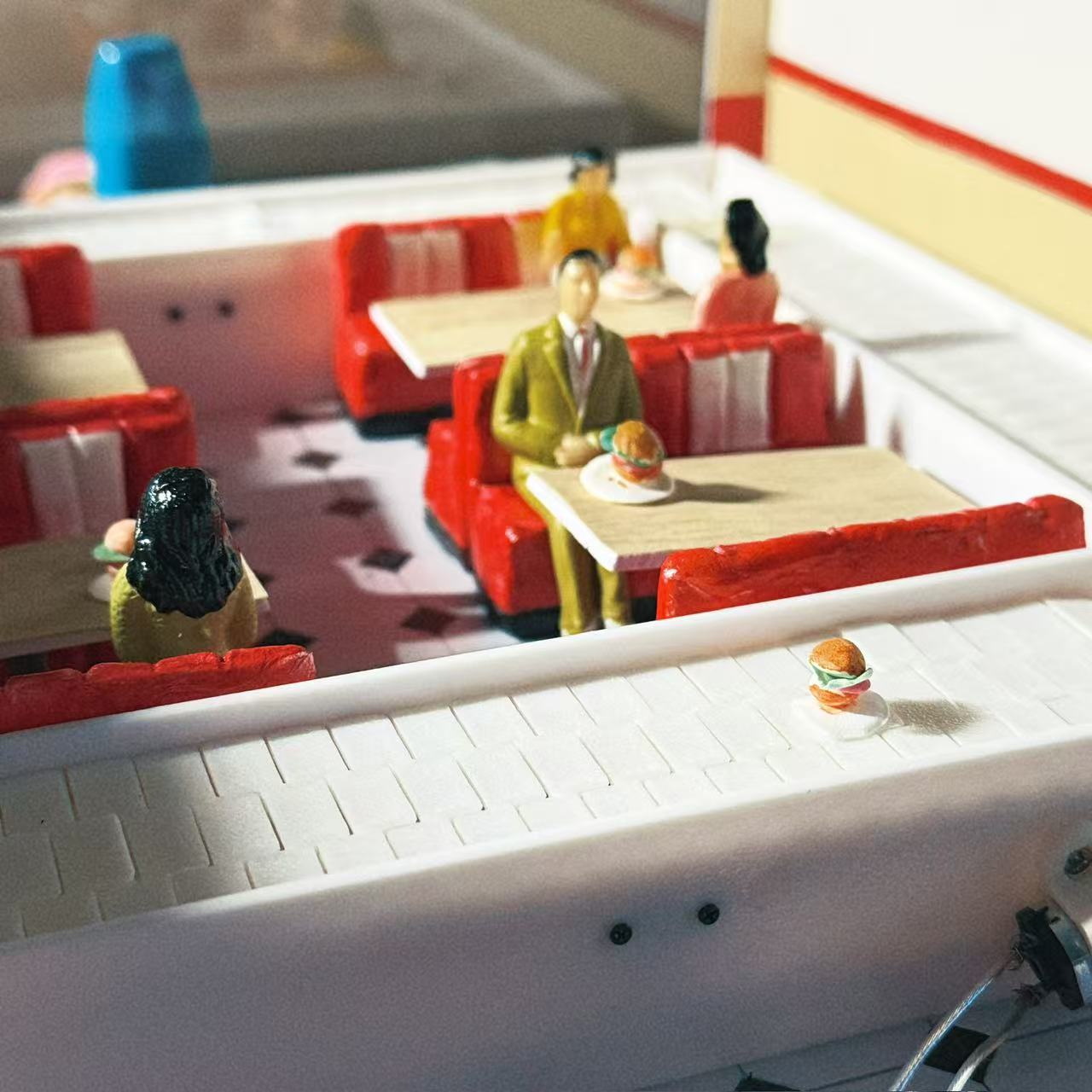
Q3. What was the biggest challenge you encountered during the creative process? How did you overcome them?
Finding a balance between visual expression and conceptual depth was one of the biggest challenges we encountered in the creative process. We neither wanted the work to be too academic for the public to understand nor to weaken its critical edge due to excessive entertainment. Therefore, to address this, we repeatedly tested and adjusted the exhibition's presentation during the design process—for example, trying different installation materials, optimising the audience's interaction path, and refining the text content and visual design on the display panels.
During the actual production of the installation, we also faced many technical challenges. To make the work more vivid and engaging, we adopted a combination of "dynamic" and "static" elements. We not only handcrafted the static parts of the model but also tried to introduce mechanical devices to achieve the real rotation of some parts of the model. In this process, I continuously modelled, tested, and modified to strive for allowing viewers to directly experience the metaphor of "cultural fast-foodization" in the work through sensory experiences.
Q4. What does this graduation exhibition mean to you? Is there anything in particular that you want the audience to feel from your work?
This graduation exhibition means more to me as a practical application of the learning achievements from the past two years. It is a process of concretising thoughts and bringing creativity to life. Two years of study have given me a new understanding of the cultural and creative industries and have accumulated more practical experience, so I hope to specifically present some of my observations and reflections on this field through this work.
I especially hope that after viewing the work, viewers can pause and think about a question: Is the culture we understand, purchase, and spread a real experience or a packaged cultural fast-moving consumer product? If this work can prompt people to start asking questions and trigger some reflections, it has already achieved its purpose.

2012 The Day We Run Away
Weiyu Zhang、Ganlin YangYunzi Lin, BA Filmmaking
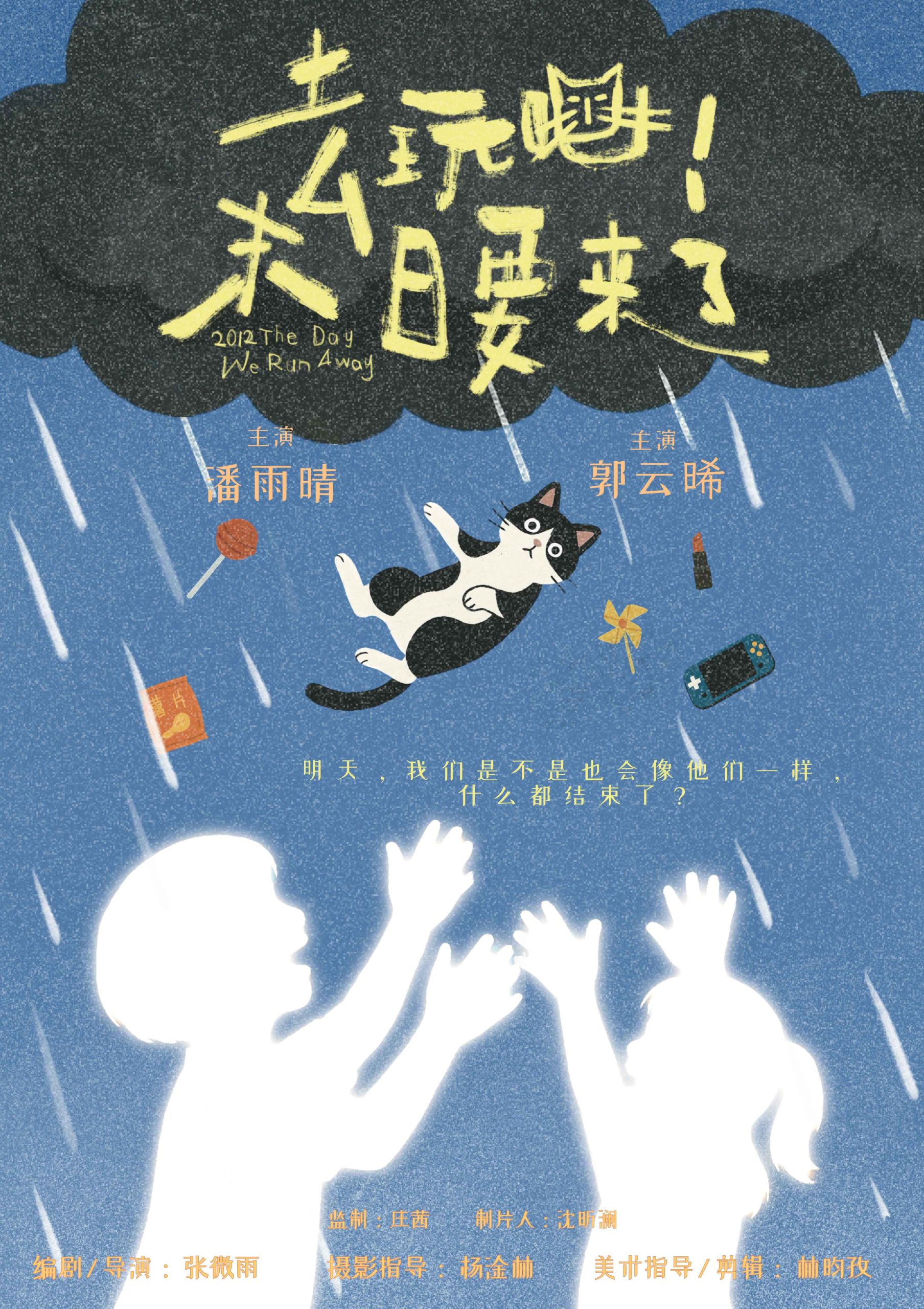
Q1.Please briefly describe your graduation work and what theme or emotion it hopes to convey.
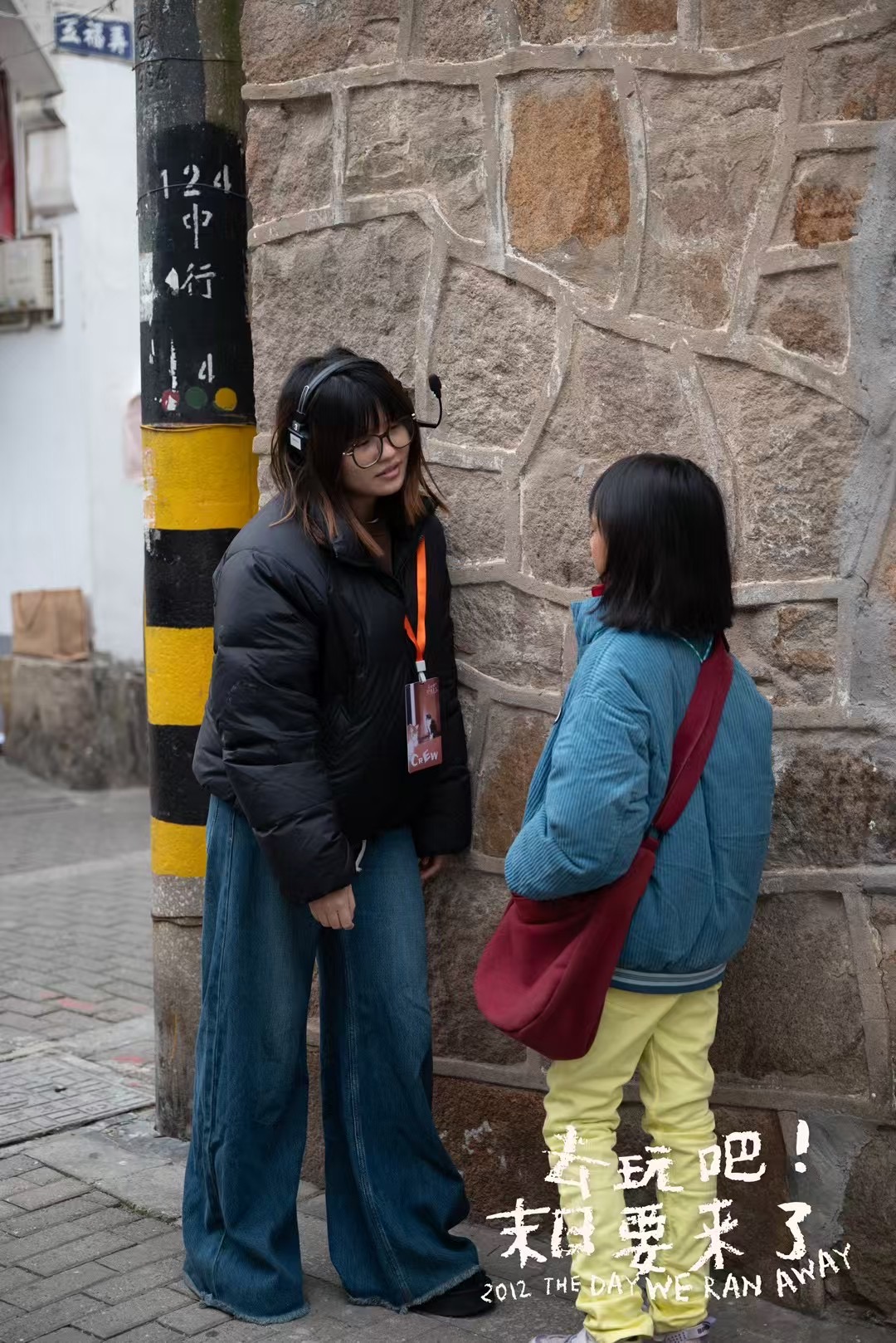
Weiyu Zhang (Director/Screenwriter): Our graduation work, Go Play! The Apocalypse Is Coming tells the story of two 10-year-old girls facing death for the first time. Naively believing that December 21, 2012, is the end of the world, they excitedly skip school and embark on an innocent and adventurous "apocalyptic journey." However, an accident makes them gradually realise that "apocalypse" and "death" are not just distant legends, but more complex and real than imagined.
As a child, adults always avoided talking about "death," so when rumours of the "apocalypse" spread around me, I didn't understand what it truly meant. Later, as I grew up and witnessed the passing of relatives, the sudden grief and confusion triggered my existential crisis. I began to think that if I had known more about "death" as a child, maybe I wouldn't have been so helpless when facing it.
Therefore, the experience of the two little girls in this film is a real and innocent "death education." In their adventure, there is the purity of childhood, the company of friendship, and the courage and unspeakable confusion when first encountering death.
This movie is about childhood, love, and how we learn to face death.
Q2.The theme of the graduation exhibition is “Future Innovators”. What do you think is innovative in your work?
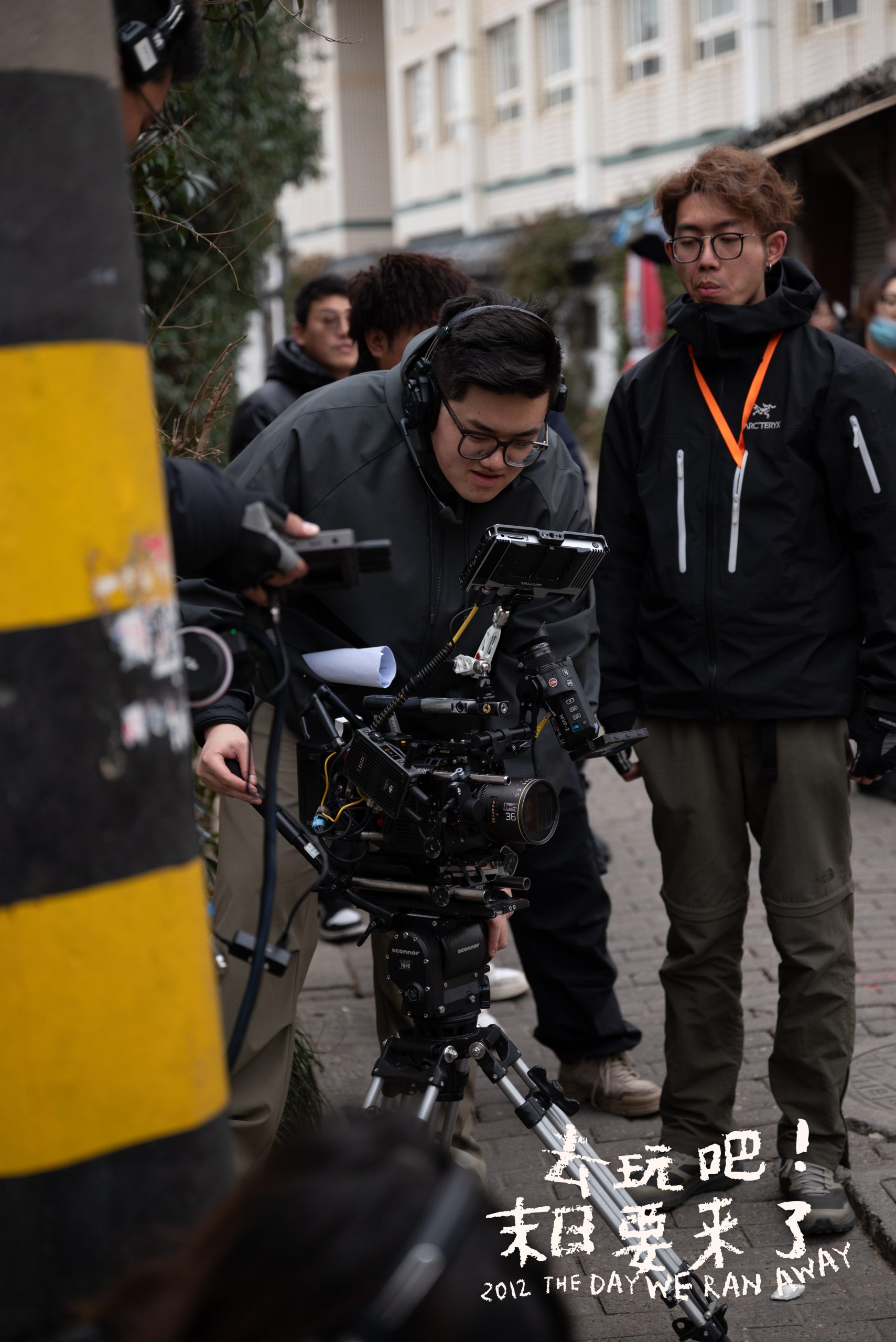
Ganlin Yang (Director of Photography / Colourist): The theme of this graduation exhibition is "Future Innovators." From the perspective of a director of photography and colourist, I believe the innovation of our film is reflected not only in the theme selection but also in visual language and technical implementation.
First, in terms of narrative, we focused on a subject rarely explored by peer creators—how children understand "death." To capture the innocent and sensitive perspective of children, we decided to shoot the entire film in a style closer to a documentary. Therefore, in photography, I chose to use Atlas Mercury 1.5x anamorphic widescreen lenses for the whole film. The anamorphic lenses themselves have a strong visual language; we enhanced the slightly distorted retro feeling in childhood memories through their soft edge aberration and unique horizontal stretching.
In camera position selection, we used low-angle shots extensively to observe the world from the perspective of children, which can better align with the characters' psychology and convey their real perception of the world. In addition, to restore the real texture to the greatest extent, we used ARRI ALEXA Mini LF and shot the entire film in 3:2 OpenGate ARRIRAW format. This raw data format provides extremely high dynamic range and colour reproducibility, but it brings great challenges to DIT, editing, and colour grading, especially under our limited budget.
The film is set in 2012, and we spent a lot of energy restoring the texture of that era—visually, I combined the colour curve characteristics of Kodak Vision3 film in the colour grading link to simulate the transitional tone of that era when digital photography was not yet perfect. Visual symbols such as QQ Space interfaces, photo booth stickers, and snacks from corner stores are not just simple nostalgia; they are the memory anchors of our generation's childhood and youth.
Another technical challenge was that the entire film was shot on location, requiring the story to take place on the same day. In reality, the shooting spanned four days, and the weather in Suzhou in February was changeable with extremely unstable light. To achieve visual continuity in post-production, we had to accurately measure light and stabilise exposure on set, and fine-tune the colour temperature and contrast of each frame during colour grading to create a naturally unified "fictional day."
In student works, very few projects choose such radical parameter and equipment combinations. But this choice allows us to truly achieve the "immersive feeling of a child's perspective" and bring the audience a visual experience where emotions and memories intersect on the big screen. I believe this is our exploration and response as image creators under the theme of "Future Innovators."
Q3.What was the biggest challenge you encountered during the creative process? How did you overcome them?
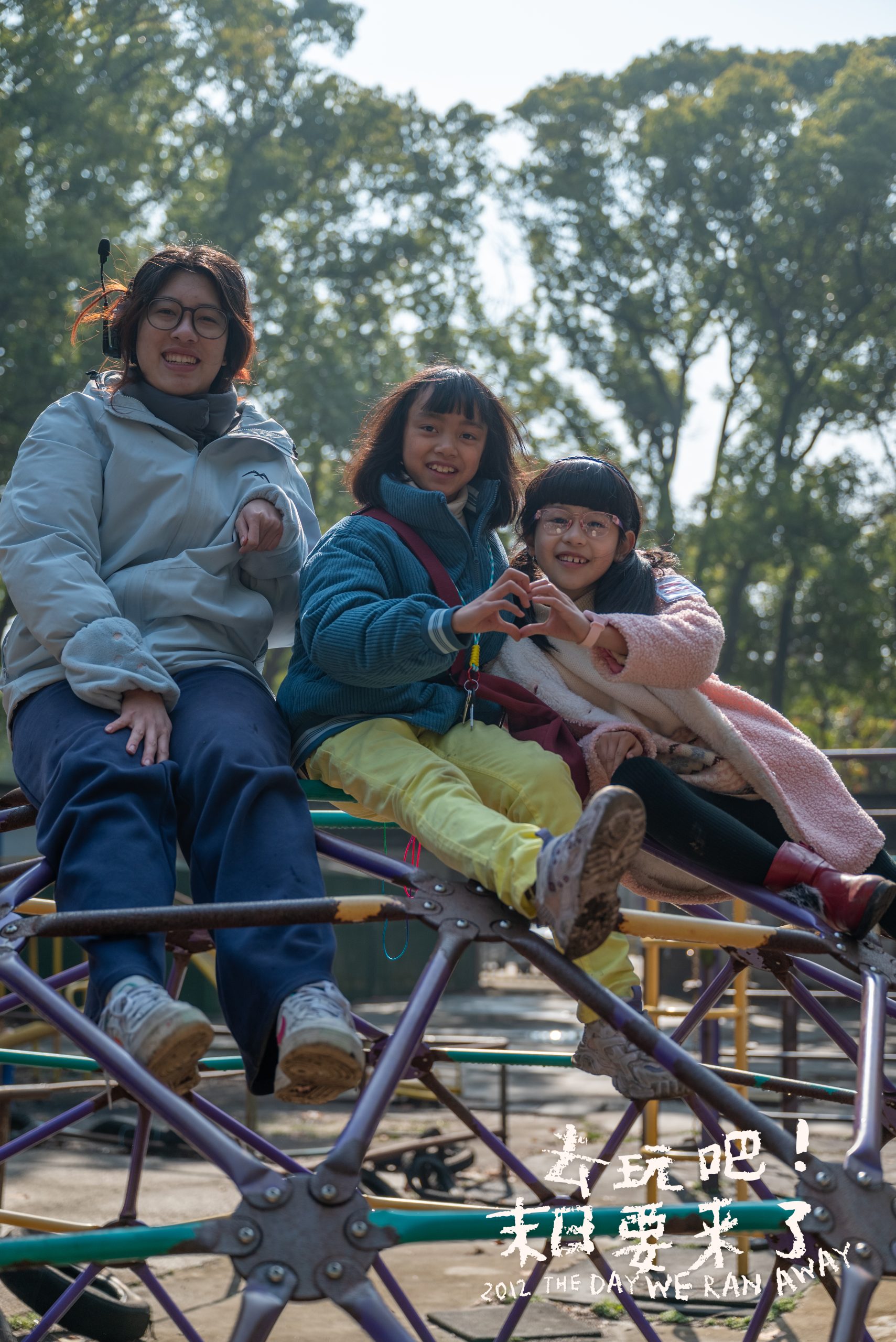
Yunzi Lin (Art Director/Editor): To be honest, this shoot almost made me believe we weren't blessed by the movie gods—we encountered unimaginable difficulties: the entire crew fought against harsh weather for three consecutive days—strong winds, heavy rain, thick fog, and low temperatures took turns, and even the highway was closed for a time due to low visibility, forcing vehicles to take a detour, severely delaying the schedule; a supporting actor suddenly fell seriously ill and couldn't attend, so we had to urgently find a suitable replacement in a very short time; since we couldn't close the road for shooting in the urban area, continuous vehicles and pedestrians broke into the scene, interrupting the shooting rhythm... The entire crew almost spent every day in a cycle of "discovering problems—solving problems," no one had time to break down, and in the end, we even turned sorrow into joy.
As an art director, the first problem I faced was how to maintain the continuity and stylistic unity of the overall visual system under highly uncertain shooting conditions. For example, originally we planned to complete all related scenes in the same real photo booth, but due to practical limitations, we had to split this scene into two different locations for shooting, yet we had to ensure that the audience couldn't detect the difference through details in composition, color, and set design. In addition, the two protagonists shot a lot of high-intensity "wild" scenes every day, and accurately restoring the continuity of their clothing, hairstyles, and makeup without sacrificing the authenticity of the characters' states was also a difficult task. More challengingly, a lot of our shooting was carried out in temporarily coordinated outdoor environments. Facing space limitations, sudden changes in light, and inconsistent background environments, I had to adjust the original art plan at any time and make on-site remedies and optimisations. It can be said that this shoot made me continuously grope for a visual narrative logic belonging to our project in the process of "patching," which had to cope with changes in real conditions and maintain the consistency of emotional expression.
In the editing stage, I encountered another dimension of challenge: how to use editing to "repair" the rhythm jumps and emotional breaks caused by these imperfect on-site conditions. Especially in the climax segment, due to shooting limitations, there was a lack of environmental red glow before the apocalypse. I tried to create emotional tension and rhythm by adding sound effects such as wind, thunder, and startled bird flocks, and using visual transitions between lightning and flashlight beams. These seemingly small supplements actually took a lot of time to match the picture rhythm, so that this scene could be both believable and moving.
In addition, the kitten, an animal actor, also brought many challenges. We always insisted on not forcing it to cooperate, but designed shots around its natural behaviour. This meant that I had to carefully pick out the cat's most natural and emotionally appropriate actions from long shots during editing, and then endow it with "emotional intent" through rhythm and perspective recombination.
Looking back on the creation of the entire film, what I feel is not "completing a job," but undergoing a real test of adaptability, creativity, and emotional expression. Those chaos and accidents instead forced me to learn that even under the most unideal conditions, we can use creativity and persistence to complete the construction of ideal images and emotional rhythms. Although this shoot was difficult, it also made me truly experience the complexity and creativity of behind-the-scenes film work, and made me more determined to continue walking this path of visual narrative in the future.
Q4.What does this graduation exhibition mean to you? Is there anything in particular that you want viewers to feel from your work?
Weiyu Zhang (Director/Screenwriter): For us, this graduation exhibition is more like a happy and touching farewell. We are fortunate to be able to use such a warm short film to write a complete end to our four years of undergraduate life.
We hope that the audience can rediscover the purest courage and imagination of childhood in this work. Maybe it can also arouse their thinking about death or cherish friendship. For us, this short film is not only a story but also a reconciliation with our past memories and a gentle gaze at growth and loss.
We hope that everyone who watches this short film can keep a little warmth of love in their hearts and meet their innocent childhood selves again.
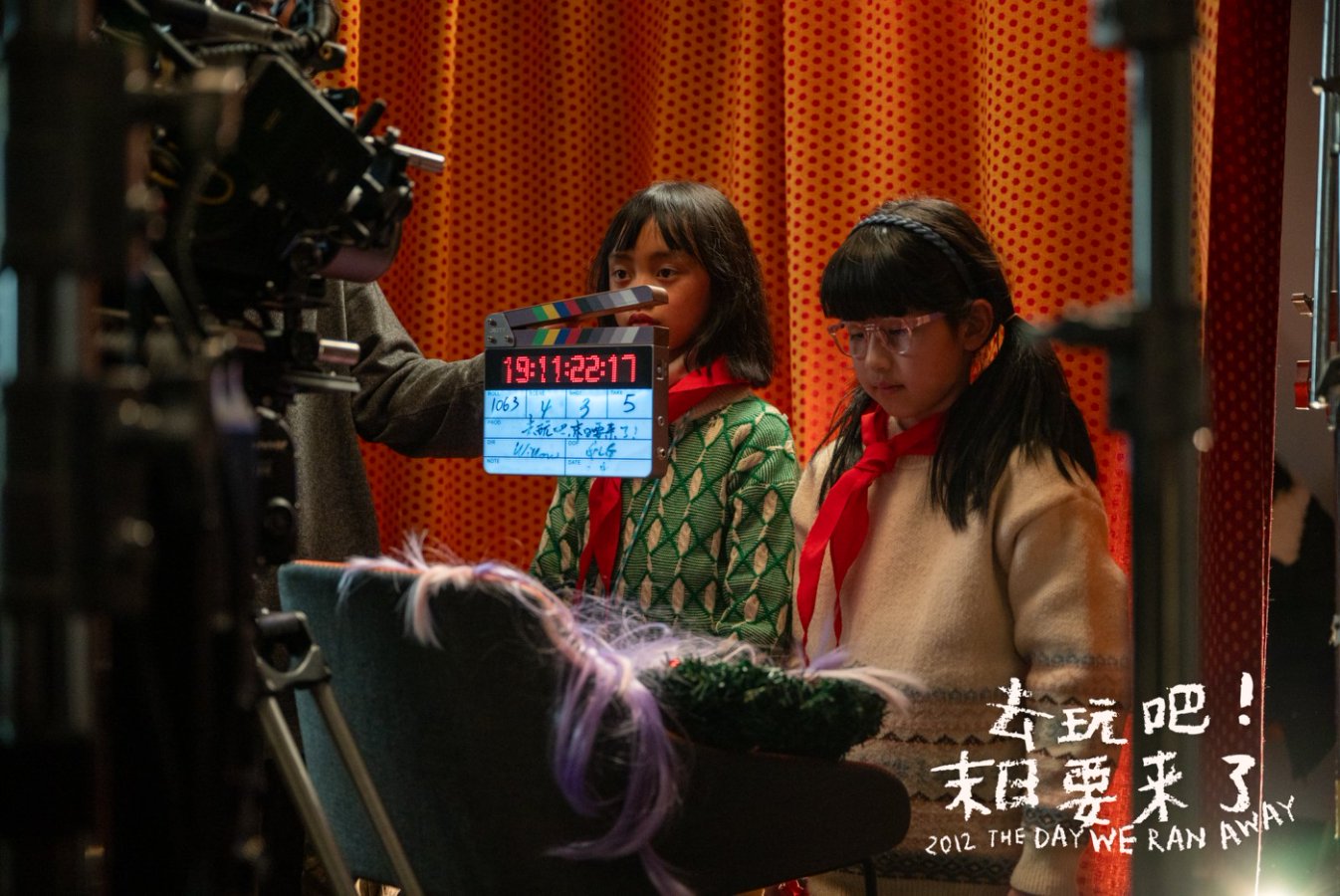
《China Diaries》
Yonghun Yoon, BA TV Production
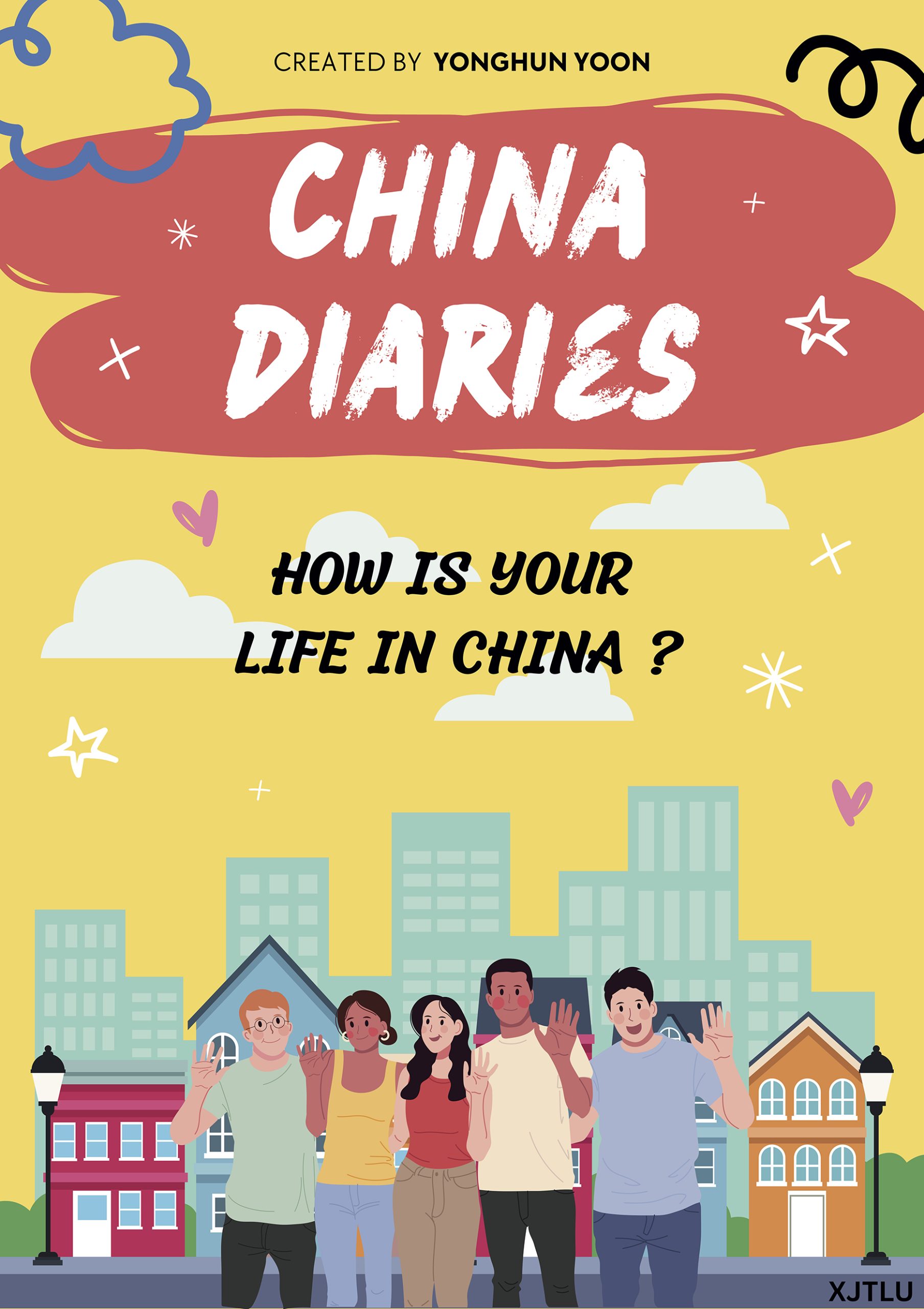
Q1.Could you please briefly introduce your graduation project, "China Diaries"? What themes or emotions does it hope to convey?
China Diaries is a reality TV series that follows the lives of foreigners living in China. The project aims to connect with people who are curious about different cultures, lifestyles, and the unique perspectives of individuals from around the world. The main emotion I wanted to convey is simple, fun and joy. My goal was to make viewers laugh and enjoy themselves as they watch the show.
Q2.The theme of this graduation exhibition is "Future Innovators". What innovative aspects do you think are present in your work?
I believe the innovative aspect of China Diaries lies in its fusion of styles. It's an English-language reality show presented with a distinctly Asian visual style. Many Western reality shows I’ve seen focus heavily on interpersonal conflict and use minimal visual effects. In contrast, Asian reality shows, especially Korean ones, tend to be more upbeat and entertaining, with vibrant, animated on-screen graphics that enhance the humour and energy. I wanted to combine these elements by creating an English reality show that incorporates the colourful, dynamic graphic style of Asian TV, offering a fresh and engaging viewing experience.
Q3.What was the biggest challenge you encountered during the creative process of "China Diaries"? How did you overcome it?
The biggest challenge was having to do everything on my own. From pre-production to post-production. I didn’t have any group mates, so I had to make every decision, manage the entire workflow, and carry all the responsibilities by myself. It was often stressful and overwhelming. Honestly, there wasn’t any special method to overcome it. I just had to push through. No one else could do it for me, so it became a personal challenge, a fight against myself to stay motivated and keep going until it was done.
Q4.What does this graduation exhibition mean to you? Is there anything in particular you hope the audience will feel or take away from your work?
For me, this exhibition represents the completion of my academic journey. It’s a moment of mixed emotions. I feel relief and pride that I’ve made it to this point, but also anxiety and anticipation about what comes next, since it marks the beginning of a new journey. As a foreigner myself, living in this country, I hope China Diaries
can offer comfort and encouragement to others who have come abroad to chase their goals. I want it to cheer them up, make them feel seen, and remind them that they’re not alone.
The Digital Tourism of the Humble Administrator’s Garden
Yifan Ai、Zhehao Fang, BA Digital Media Arts
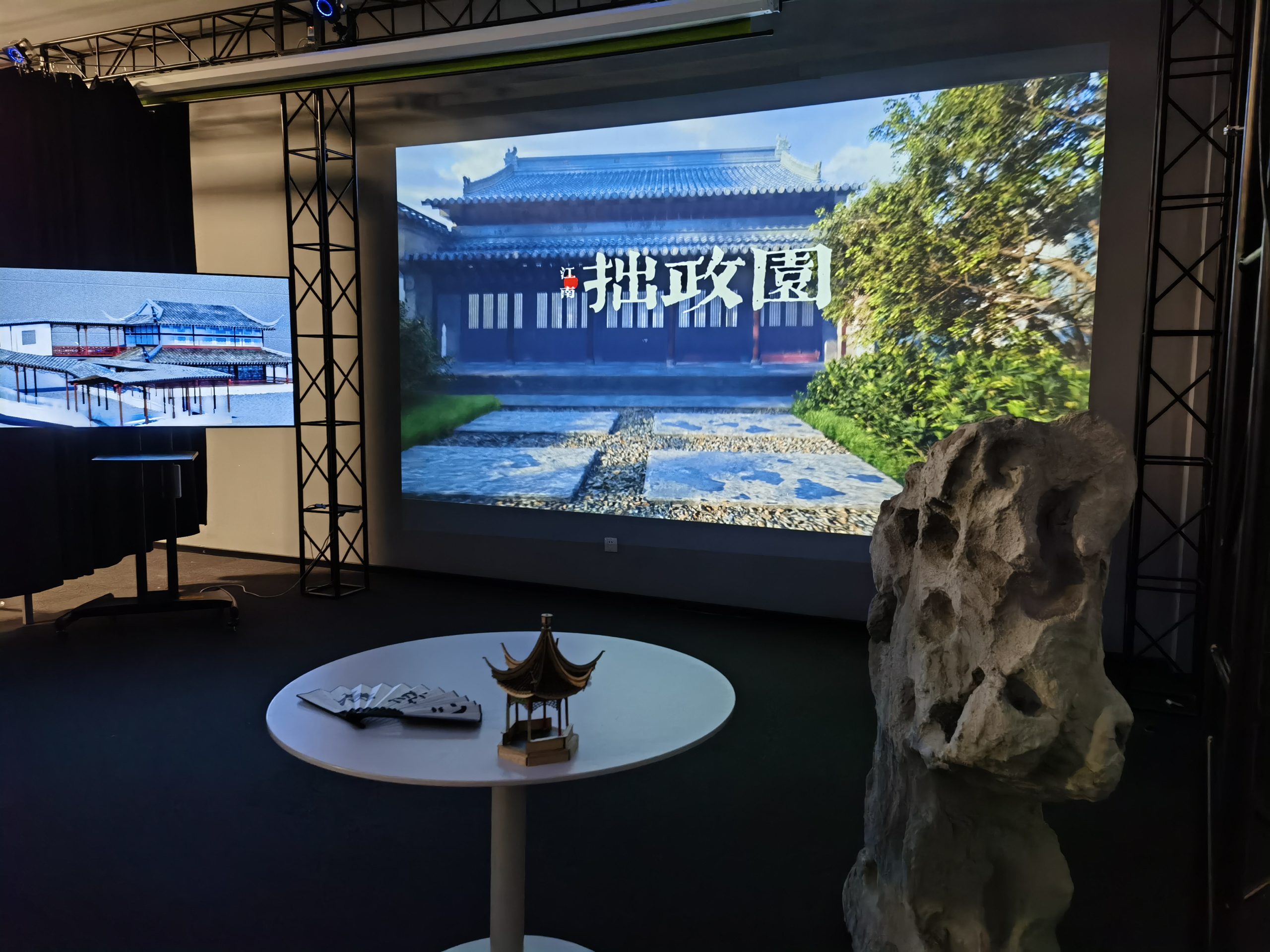
Q1.Could you briefly introduce your graduation project and what themes or emotions it aims to convey?
My graduation project, Digital Cultural Tourism of the Humble Administrator's Garden, was guided by Professor Liu Fang and co-completed with my classmate Fang Zhehao. Based on Unreal Engine, we digitally replicated Suzhou's Humble Administrator's Garden at a 1:1 scale and integrated a "digital human" AI tour guide, enabling audiences to "virtually" traverse the classical garden, listen to intelligent explanations, and immerse themselves in the poetic charm of Jiangnan gardens. The core objective is to use cutting-edge virtual engine technology to "archive" traditional cultural heritage, allowing more people to understand, appreciate, and cherish the beauty of Chinese garden art across time and space.
Q2.What innovative elements do you think your work embodies?
Real-time Four Seasons System: Relying on Unreal Engine's lighting and particle systems, we built an environment that can switch between "spring, summer, autumn, winter" in real time, letting viewers experience the light and shadow and plant changes throughout the year within minutes.
Ecological AI & Soundscape: We introduced behavioural logic for local animals like swans, egrets, and sparrows, combined with environmental sound fields and water physics simulation, to present a vibrant garden ecosystem.
Digital Human Tour Guide: A self-developed voice interaction module allows audiences to converse with the AI guide and obtain in-depth interpretations of architectural imagery, poetic allusions, etc.
Lightweight Asset Optimisation: Through technologies like Nanite and virtual texturing, we compressed ultra-high-precision models to a volume that can run smoothly on ordinary PCs, providing a technical template for promoting cultural scenarios.
Q3.What was the biggest challenge you encountered during the creative process, and how did you overcome it?
The greatest difficulty was high-precision data collection. As drone shooting was prohibited inside the garden, we could only scan point by point with handheld devices and then model based on public images and historical archives. To ensure authenticity:
Point Cloud Registration: We registered multi-source scanned point clouds to obtain the overall 3D framework.
Photo Measurement: We took frame-by-frame shots of key details (beam carvings, lattice window patterns, vegetation postures) and used Photogrammetry to establish PBR textures.
Asset Iteration: Using Unreal Engine's LOD (Level of Detail) and Unreal 调色 (colour grading) iteration, we ensured the scene maintained high frame rates and artistic consistency across different graphics card configurations.
This challenge pushed us to form a digital workflow suitable for traditional gardens.
Q4.What does this graduation exhibition mean to you, and is there anything specific you hope the audience will feel from your work?
This is the first time I’ve presented a complete individual/team project face-to-face to the public, marking an important transition from student to professional creator. Through Digital Cultural Tourism of the Humble Administrator's Garden, I hope the audience will:
Witness technology empowering tradition: Virtual engines are not just for entertainment but can inject new vitality into the preservation and dissemination of cultural heritage.
Sense the essence of gardens: The layout of pavilions and waterside pavilions, the narrative of "changing scenery with each step", and the rhythm of seasonal changes together weave Eastern aesthetics.
Feel inspired to visit the real garden: The digital experience is a key, but the true spatial experience awaits in Suzhou.
Comprehend the responsibility of inheritance: Every click and pause is a testament to the continuation of traditional culture.
Heartfelt thanks to the college for providing the exhibition platform and to Fang Liu and all instructors for their meticulous guidance in technology and creativity. May this "small but exquisite" digital garden bring positive, warm, and imaginative energy to everyone.
Blooming
Lanyin Zhang, BA Digital Media Arts
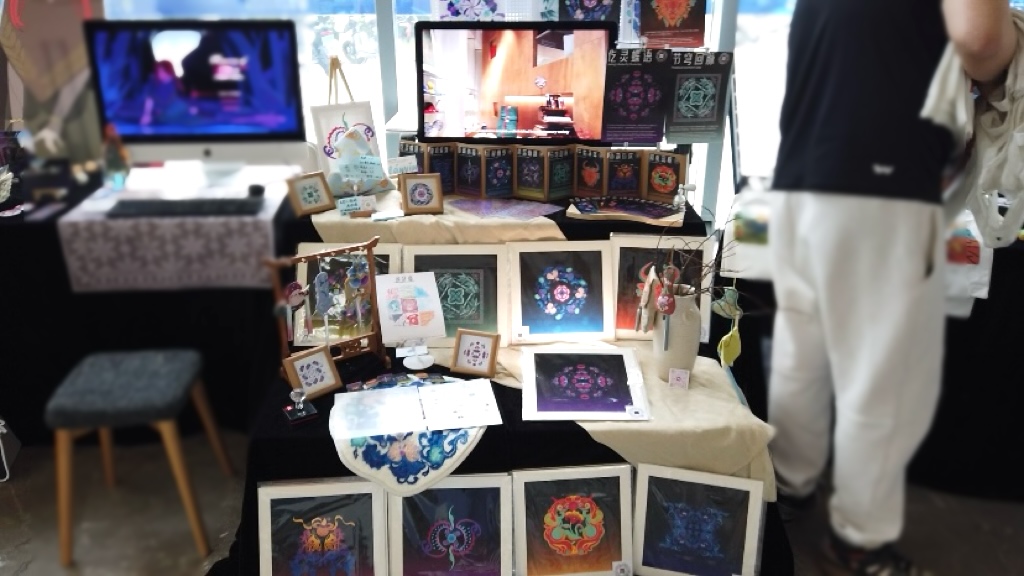
Q1.Could you briefly introduce your graduation project and what themes or emotions it aims to convey?
My graduation project, Blooming, combines AI-generated content with AR (augmented reality) technology to innovate and propagate the embroidery patterns of the Gelao ethnic group through digital means. I integrated traditional patterns with dynamic imagery: using After Effects to create animations of vines growing, corresponding to the "endless growth" implication in the pattern Wanrui Xuandi; and using Touchdesigner to produce particle effects, echoing the cultural symbol of "fertility and blessing" in Yuhu Yanqing. Each pattern is paired with a QR code, allowing audiences to experience AR effects in real time via mobile phones, thus intuitively understanding the cultural meanings behind the patterns. The project aims to demonstrate that traditional culture and modern technology can engage in dialogue and coexist—tradition is not a passive object to be "preserved," but can "grow" in new ways through technological empowerment.
Q2. What innovative elements do you think your work embodies?
The greatest innovation lies in my attempt to use AI and AR technologies to participate in the re-creation and dissemination of ethnic intangible cultural heritage patterns. On one hand, by collecting and analysing the characteristics of existing Gelao patterns, I used AI (such as different Lora models) to generate new colour schemes and graphic inspirations, enabling traditional patterns to rejuvenate while respecting their original design logic. On the other hand, AR technology brings static patterns to life: through visual languages like dynamic growth and particle diffusion, it stimulates emotional connections between the audience and the patterns. This "visible, dynamic, and interactive" experience breaks through traditional pattern dissemination methods.
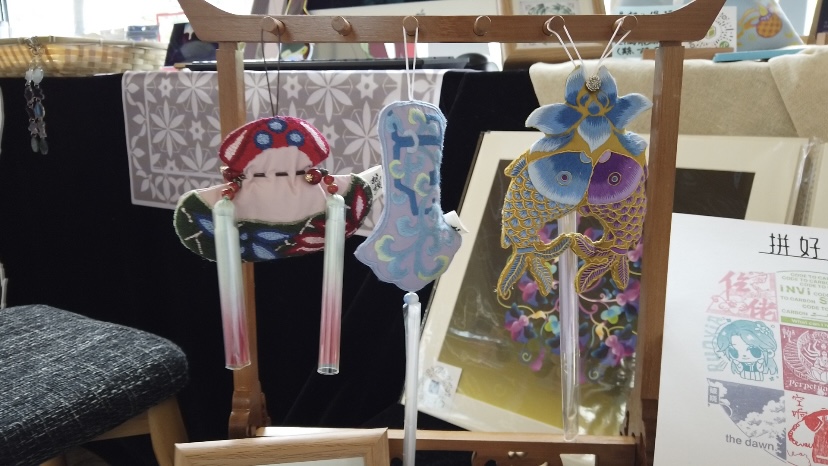
Q3.What was the biggest challenge you encountered during the creative process, and how did you overcome it?
The biggest challenge was how to make truly valuable innovations while respecting traditional Gelao embroidery patterns. There are many intangible cultural heritage patterns on the market, and many innovations tend to be superficial. After conducting extensive field research and interviewing a Gelao intangible cultural heritage inheritor, I realised their innovation often lies in "seeking newness within the old"—by re-colouring or transforming the carrier rather than completely subverting the original logic. Thus, I designed along this path: retaining the traditional design logic inspired by flora and fauna, using bold colour schemes and combined designs for new elements, and leveraging AI to generate patterns with more contemporary aesthetics based on these foundations. This approach continues the cultural roots while expanding its branches.
Q4. What does this graduation exhibition mean to you, and is there anything specific you hope the audience will feel from your work?
This graduation exhibition is a periodic summary for me and an important practice of integrating learned technologies with personal cultural concerns. I hope the audience will not only be attracted by the patterns' beauty and AR interactions but also feel the deep spirituality and vitality of ethnic minority cultures. I particularly hope they will realise that intangible cultural heritage is not a "statically displayed artefact" but can re-establish connections with us through new media in the contemporary era. It deserves not only to be seen but also to be re-understood and re-created.
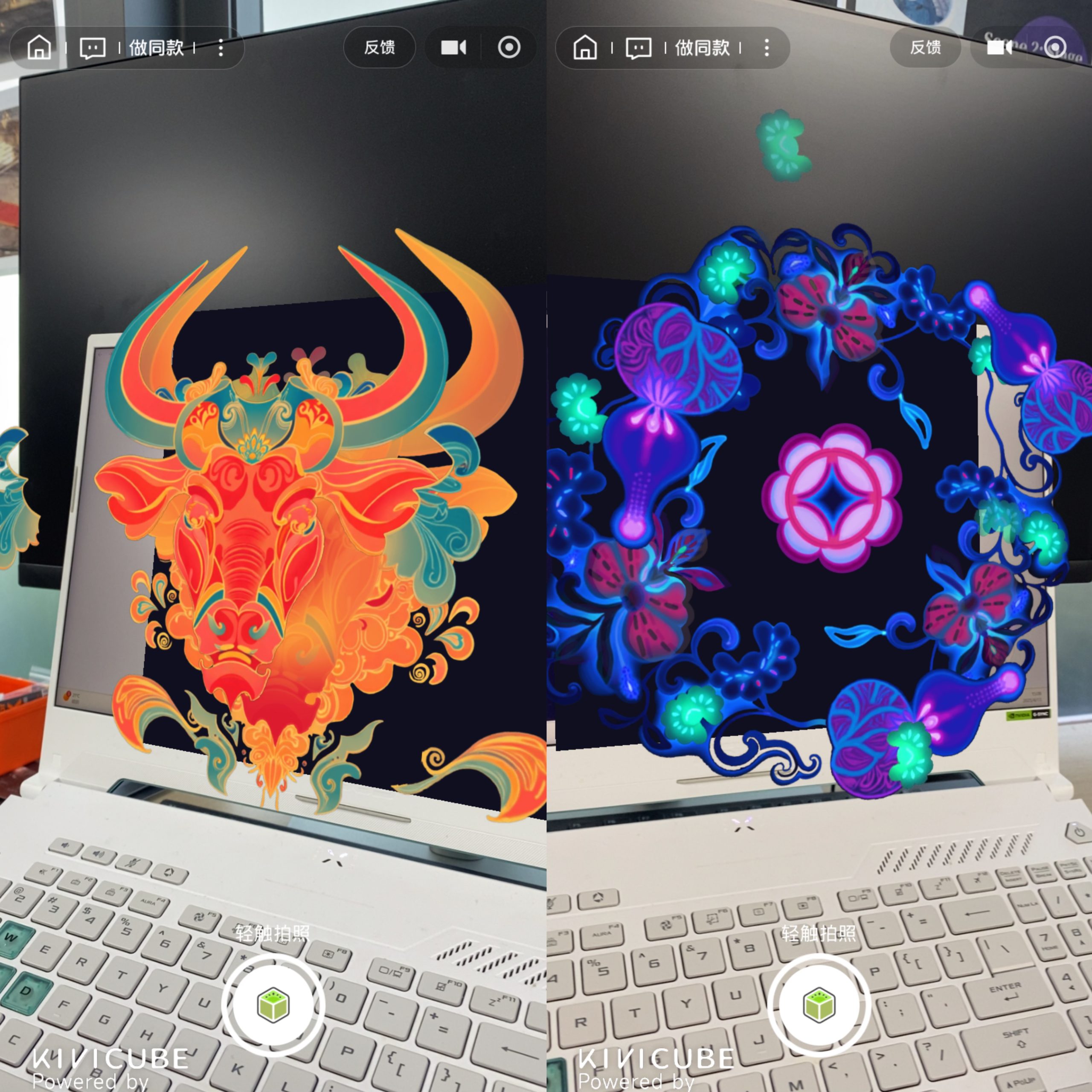
In Her Light
Bolin Li
BA Arts, Technology and Entertainment with Contemporary Entrepreneurialism
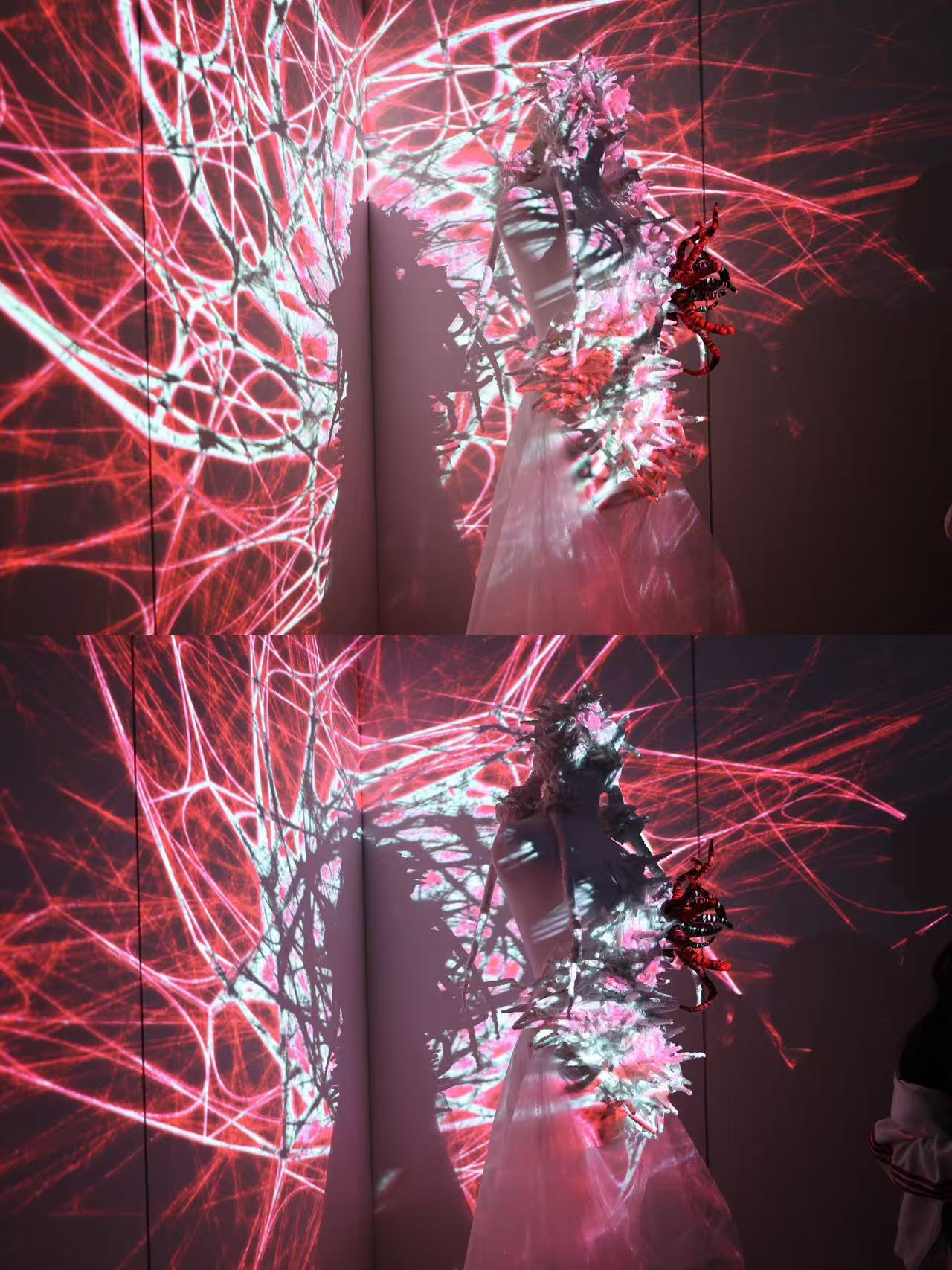
Q1.Could you briefly introduce your graduation project and what themes or emotions it aims to convey?
My project, In Her Light, is an installation combining interactive technology and textile art, inspired by my mother's experience with breast cancer. During that period, I deeply realised that illness brings not only physical pain but also emotional fluctuations, such as fear, helplessness, yet also strength and the hope for healing.
I aim to recreate these complex emotions not through words, but through a "sensory" experience. When audiences approach the installation, the visuals soften and calm; when they step back, the imagery becomes chaotic and restless. This interactive design invites viewers to engage actively, hoping they can truly understand a patient’s inner emotions. It’s both a tribute to my mother and a way to help more people understand the emotional world of breast cancer patients.
Q2.What innovative elements do you think your work embodies?
First is the use of materials. I employed three colours of threads—black, red, and white—combined with tie-dye techniques to symbolise different emotional states: black represents fear and the unknown, red resembles the expansion of blood vessels, and white embodies both healing and vulnerability. These threads are not simply sewn but shaped into three-dimensional structures like "claws," mimicking the spread of tumour cells while externalising emotional states.
Next is the "distance-responsive" interaction mechanism. The closer the audience stands, the calmer and softer the projection becomes; the farther they move away, the more distorted the imagery grows. This mechanism is rooted in accounts from my mother and other breast cancer patients in the ward. I noticed that most patients both long for support and care from others, yet feel ashamed to disclose their condition, fearing it might be dismissed as trivial. Thus, this interactive design embodies the emotional contradiction of breast cancer patients—only by truly approaching can one trigger the gentle version of the projection, revealing their authentic inner world.
Additionally, I integrated scent and sound elements. A faint alcohol aroma in the space evokes the hospital environment, while 100Hz low-frequency noise in the audio creates subconscious tension. These multi-sensory elements aim to immerse viewers in a more authentic experience of the emotional landscape.
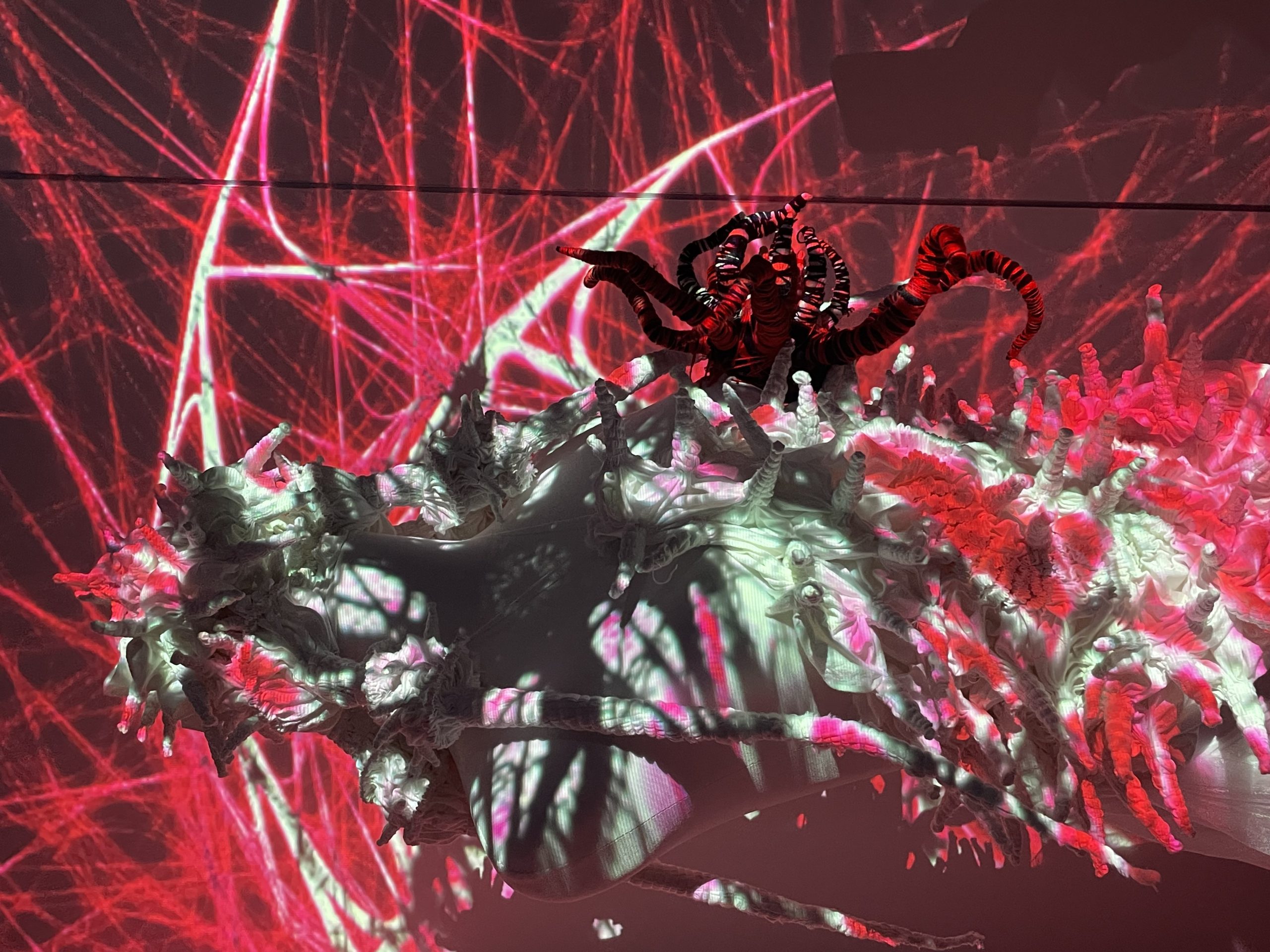
Q3.What was the biggest challenge during the creative process, and how did you overcome it?
The hardest part was infusing technology with "emotion." Initially, I planned to use pressure sensors, prompting viewers to press a part of the installation to trigger visual changes. But testing showed this was too deliberate, pulling audiences out of the experience. I switched to ultrasonic sensors, which detect proximity and enable more delicate, layered visual transitions.
Technical challenges also abounded—data transmission between Arduino and TouchDesigner, sensor signal stability, projector positioning, etc. I spent countless hours debugging, finally choosing a projection solution that ensured clear visuals and unobstructed space, making the interaction as "invisible" as possible, letting technology serve emotion rather than overshadow it.
Q4.What does this graduation exhibition mean to you, and what do you hope the audience will feel from your work?
This exhibition holds special meaning—it’s not just a display of my work but an extension and transformation of my journey with my mother. I hope the installation becomes a space where people can pause and feel quietly. Here, you don’t need to understand art or technology—just be willing to approach and experience.
Most importantly, I hope audiences will realise that sometimes, being close to someone doesn’t require many words, but rather letting them know "you’re there." This is the emotion I aim to convey: companionship, understanding, empathy, and the strength found in vulnerability.
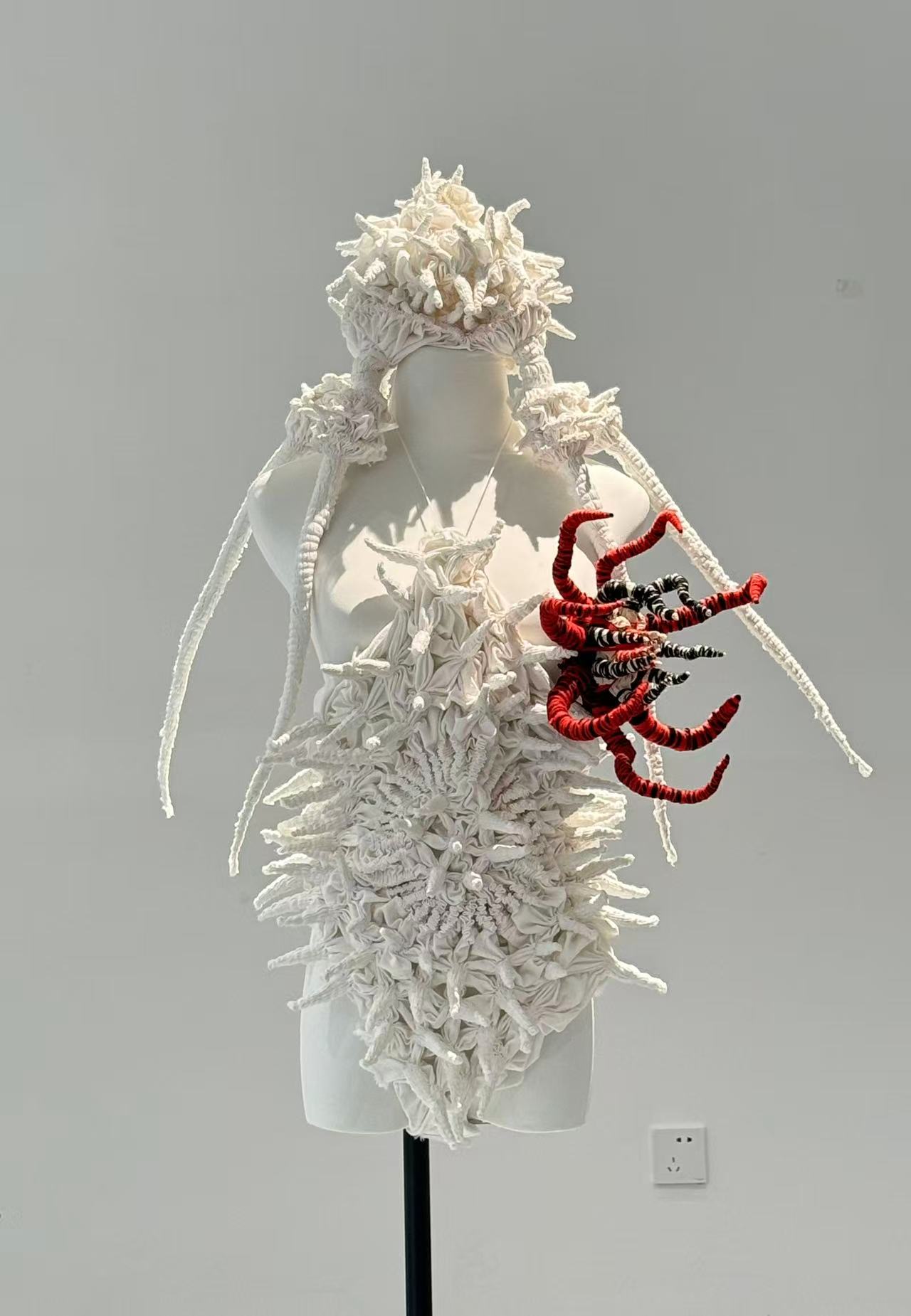
By Wenzhen Li
Photos courtesy of AFCT
02 Jul 2025

